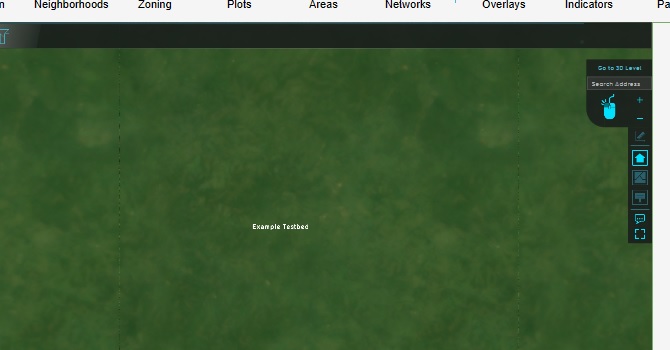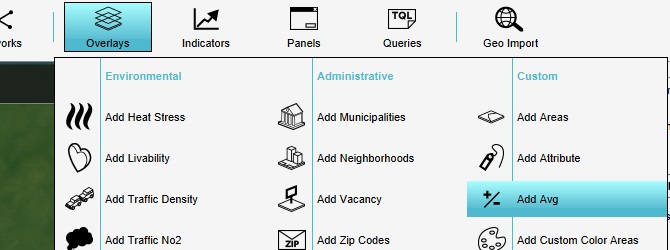Testbed tutorial: Difference between revisions
mNo edit summary |
mNo edit summary |
||
| Line 33: | Line 33: | ||
===Testing how the average overlay deals with edges=== | ===Testing how the average overlay deals with edges=== | ||
The question you're going to investigate is how the average overlay calculation functions in cases where the calculation takes place near the edge of the project area. | |||
Start by adding the overlay we're going to test. Add an average overlay to the project. | |||
[[File:AddAverageOverlay.jpg|350px|frame|center|Add an average overlay.]] | |||
Revision as of 13:09, 29 April 2019
Prerequisites
The following prerequisites should be met before starting this tutorial:
- This tutorial relies on base knowledge about the editor interface. If you have not yet followed the tutorials related to those subjects please do so first.
- This tutorial can be followed in an empty project area.
Preparations
Take the following steps as preparation for following this tutorial:
- Create a new, empty project, sized to 500m by 500m. Ensure the unit system is set to "International". Also ensure it's an empty project area, not based on a real world location.
Introduction to testbeds
A testbed is a controlled setup, in which there are as few variables as possible which could influence a given situation.
In the Tygron Platform, whenever you create a project based on real-world data, the project is populated with a wide range of data. Virtually every project area contains numerous constructions, height differentials, and terrain types. If any calculation takes place, especially spatial calculations, all that data can serve as input. That makes it a lot more difficult to see exactly how a specific element factors into a specific result, or where the difference between an expected and actual result comes from.
For this reason, what characterizes a testbed most is the absence of data. Anything that is not requires for a specific case is left out, or at least left in a uniform, invariable state.
Starting point
For each testbed, the starting point is the empty project.
An empty project contains the following data:
- There is a uniform height map, with the height of the terrain set to 1m relative to datum.
- The surface of the terrain is of the "Open Land" type. The underground terrain is of the "Unknown" type.
- There is only a single municipal stakeholder, as a stakeholder to select for an editing user. The entirety of the 3D world is owned by that stakeholder.
- There are 4 neighborhoods (north-west, north-east, south-west, south-east), or if the project area is small, 1 single neighborhood.
- There is no zoning plan.
- There are no construction.
- The upper-left spatial coordinates of the project area are set to 0 degrees latitude and longitude.
Testing a simple functionality
Testbeds can be used to test specific implementation questions. For this tutorial, a few simple questions and the steps to answer them are described.
Testing how the average overlay deals with edges
The question you're going to investigate is how the average overlay calculation functions in cases where the calculation takes place near the edge of the project area.
Start by adding the overlay we're going to test. Add an average overlay to the project.

